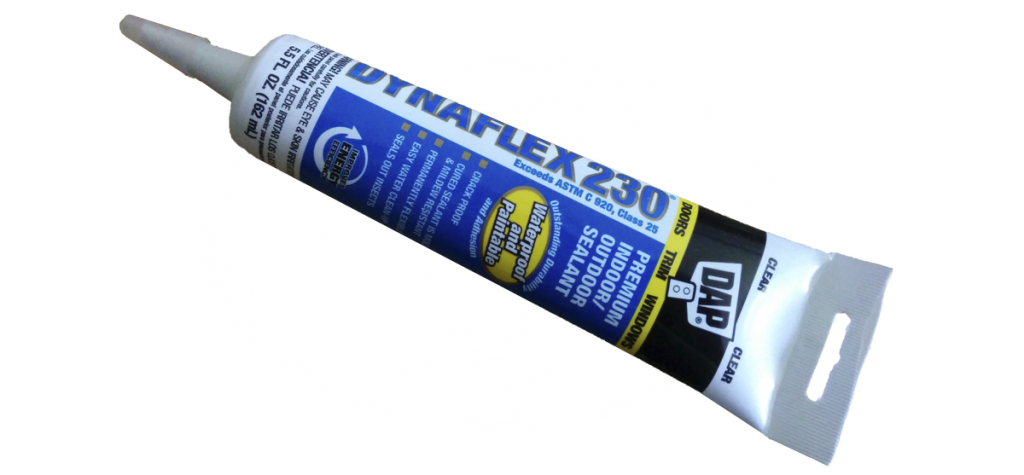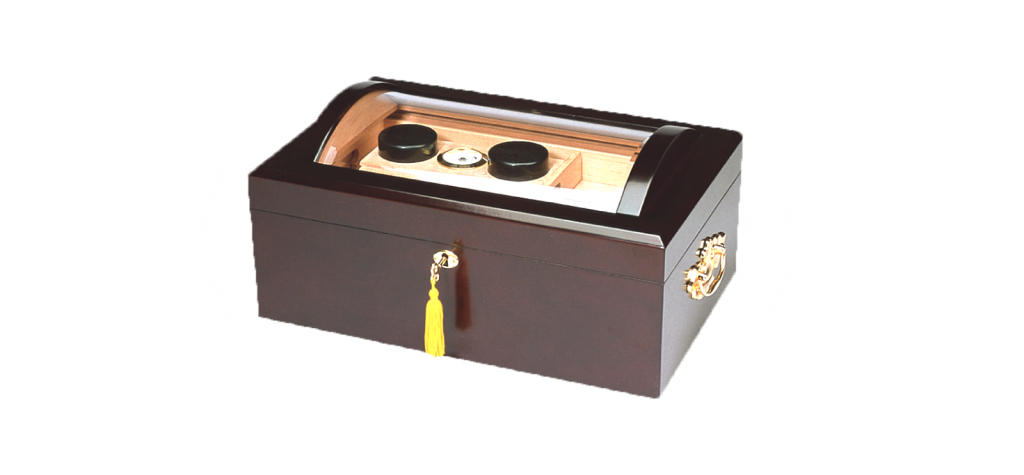Thus far in my rather young, one year-ish journey into the word of cigars I’ve been managing my cigar inventory with assorted zip-lock bags and tupperware, and all without the benefit of a hygrometer. Well, last month that all changed with the gifting of a Il Duomo Display Dome Humidor from my brother, Draw. It has a 150 stick capacity and a curved glass display dome.
I was having problems with it maintaining humidity, though, and was afraid it would require constant micromanaging here in the very arid Southwest. But while reading some forum posts over at BOTL (Brothers of the Leaf) I learned that the seal around the glass in these glass top humis is sometimes ineffective, so I decided to try to improve that seal in hopes of minimizing this struggle to maintain acceptable humidity levels.
(Note 5–1‑2014: See my revised thoughts at the bottom of this article before trying the original approach which follows.)
One recommended method of sealing the glass edges was to use food grade silicone, which doesn’t have the vinegar like odor which standard silicone caulking has. After unsuccessfully looking for such a product at a reasonable price I gave up on that idea and began to noodle on other ways to make a seal without stinking up, or junking up, my new humidor. And the idea I lit on was to try using Sculpy Clay. This is a modeling clay which is not oil based like classic modeling clay (think Gumby and Pokey), and it can be made into craft projects and heat set to bake it into a solid form. I have no need to heat set it, but I do like that it doesn’t have oil which will be drawn out and discolor or even swell up the wood.
I found the color “tan” is a real close match to the cedar. A small pinch was rolled between my hands to form a “worm” sized/shaped length, long enough for one side of the glass at a time, and I laid that in the corner where the glass meets the wood — on the inside of the lid. I then pressed it down and finally slid my finger along the length while pressing firmly, making a nice curved fillet in the glass-wood joint along one edge of the glass at a time. This has resulted in a very nice looking seal. Actually it is un-noticable if not looking for it And, during the week since making this improvement, the humidity has stayed very stable. Success! A technique worth trying if you are having trouble with maintaining humidity in your glass top humidor.
Revised recommendation (5–1‑2014)
The above technique worked for me throughout the warmer Summer months. But as the weather cooled my Sculpy Clay seal would continuously crack and I’d notice the hygrometer readings dropping, even with well charged humidifier jars and packs. The clay is flexible, but not elastic; meaning that if the joint it is sealing grows tighter due to thermal expansion, it will flex to accommodate it, but if the joint widens, due to thermal contracting in the cooler environment, it will simply crack along the joint, compromising the integrity of the seal.
It was this behavior which lead me to consider using a non-silicone caulk which would adhere to the surfaces and have enough elasticity to maintain the seal if the joint moves due to thermal expansion/contraction. The product I switched to is DAP Dynaflex 2300. Quoting the company, “It combines the superior flexibility of a silicone with the easy tooling, excellent paintability, low odor and water clean-up of a latex.“ After carefully removing all traces of the Sculpy Clay (which actually does have oil in it, after all) I squeezed in a bead of Dynaflex 2300 and smoothed it out with a finger. I tried to avoid getting the caulk on the glass beyond the edge where it needs to be, and used a wet finger to wash it away where it spread out too much while smoothing it. This joint dried in about four hours, and you can tell when it is dry because it will change from white to clear.
After carefully removing all traces of the Sculpy Clay (which actually does have oil in it, after all) I squeezed in a bead of Dynaflex 2300 and smoothed it out with a finger. I tried to avoid getting the caulk on the glass beyond the edge where it needs to be, and used a wet finger to wash it away where it spread out too much while smoothing it. This joint dried in about four hours, and you can tell when it is dry because it will change from white to clear.
I then re-seasoned the humidor and re-stocked it — taking the opportunity to re-organize it and re-joiced in having a re-liable humidor once again.


So, Punch,
I am having a similar problem with my humidor. Where can one find this Sculpty Clay product? Looking forward to trying it out.
Great site by the way!
Peter
Thanks for the kind words, Peter. I found the closely matching “tan” color Sculpey III Polymer Clay in a 2 oz. pack at Jo-Ann’s Fabric and Crafts, here in the Phoenix area. It can be ordered online here for $2.49 (plus shipping). Michaels crafts stores would be another option, but they were out of the tan when I was looking. Wal-Mart didn’t have the small single packs, but had a multi-color package that was more than I needed and didn’t have the color I was looking for, but it would certainly work if you don’t have another source nearby.
Hey Punch, I tried your advice on helping to seal the humidor and it did help.
My humidor is not as expensive as the one your brother gifted you. I bought mine on Ebay and it’s a 300 qty table top unit that I paid less than $100 for. The humidor had plastic (not glass) see-through panels both in the top door and in the fold down door.
I decided to have some glass panels cut for the doors (measured the openings then went to my local True Value Hardware store where they cut the glass for me — for about $15) and I used a clear glue to attach the glass panels to the existing plastic. I could not remove the plastic without damaging the humidor doors.
I had to keep the humidor open for about 24 hours while the clear glue cured, so I wrapped the openings tightly with plastic wrap and kept the ‘seal’ while the doors were left open to allow the glue to cure. Note — If if I did not leave the doors open, gravity took its toll and the glass would fall out. I also recommend taping the glass panels to the door panel so the glass pieces will stay in place.
After 24 hours I removed the plastic wrap from the open humidor and closed the doors. The doors now have some nice nice added weight to them with the added glass, and the humidor has been consistently keeping its humidity level. That was not the case before.
I also want to note that I have one of the Cigar Oasis electronic humidification devices in the humidor that does a nice job of monitoring the humidity levels. I highly recommend the electronic humidification device.